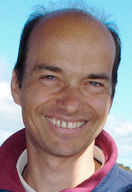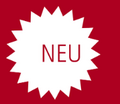Erlesene Geologie_09: Einführung in die Sedimentologie
UELG-065/F
Renewable aggregates in Austria II
2016
The project undertakes an assessment of renewable aggregates with respect to quality, quantity and rate of regeneration.
In alpine regions, alluvial fans, valley fills and debris cones represent natural aggregate resources of economic importance. Due to continual erosion, they constitute renewable sources of sand and gravel. However, not all material is equally suitable for the construction of roads or buildings. Usability depends on grain size distribution, sorting, roundness and mineral composition. These parameters in turn depend on the rock types in the provenance area, on the mode and distance of transport and on the depositional environment. Previous projects developed GIS routines to derive the morphology and geology of the provenance area of a given deposit and to forecast lithological composition, grain size, shape, angularity and sorting of the sediment. The methods were apllied to all alluvial fan and debris cone deposits in Austria. Valley fills have not been characterized so far.
The aims of the current project are (a) to extend the computer-based characterisation of renewable aggregate deposits to valley fills and man-made sediment traps in alpine rivers, (b) to estimate volumes and accumulation rates, (c) to fill the polygon attribute table of the Austrian Map of Soft Rocks with information on litho-spectrum, grain size, shape and sorting, (d) to estimate the quality and potential use of deposits as resources for construction material and (e) to provide a basis for sustainable use of aggregate resources in alpine regions.
Methods: The delineation of provenance areas and the calculation of their morphometric parameters and geological make-up is done by GIS routines using digital elevation models and geological maps. Lithologies are grouped according to resource-relevant criteria such as mineral composition or resistance to weathering. Resource quality is classed into four categories (a) highest quality – usage as high-quality gravel, e.g. concrete aggregate, without prior treatment, (b) good quality – usage as construction material, e.g. road construction, after sieving and washing, (c) medium quality – usage as low-quality material, e.g. for backfill or as bulk material and (d) low quality – no use. Verification of material property and quality forecasts is performed using data from active and abandoned gravel pits. Estimation of volumes and accumulation rates are based on case studies and data from sediment traps. The renewable part of sediment deposits is quantified by repeated drone surveys before and after mudslides and subsequent photogrammetric analysis.
Projectfacts
| Project title | UELG-065/F - Computer-based characterisation of renewable aggregate deposits in Austria with respect to quantity, quality and potential use as construction material |
| Project acronym | UELG-065/F |
| Project short title | Renewable aggregates in Austria II |
| Project manager | Dr. Sebastian Pfleiderer |
| Department | Mineral Resources |
| Period of time | 01.07.16 - 31.12.19 |
| Financing | BMWFW |



